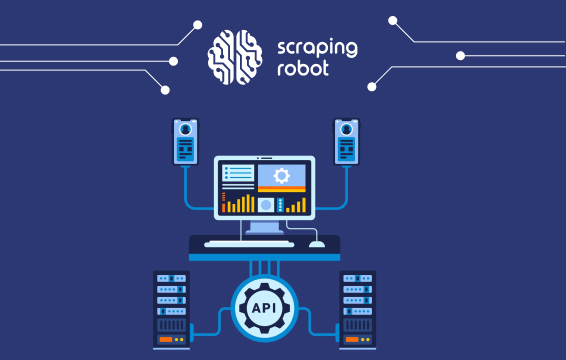How Do APIs Work: The Value of APIs to Data Networks

Table of Contents
You probably have heard the term API before. You probably also do not know what exactly they are or how exactly they work. Maybe you don’t even know where they are used. One thing that is certain though is that you have used APIs before. Don’t believe me? Remember signing up for that blockchain wallet with your Google account? Without having to log in to Google or enter your details? Yeah, that was Google’s API communicating your account information to the wallet’s API so you can create an account. Oh, and that live map feature in your Uber app? That’s the work of an API too.
APIs are behind nearly every form of interconnected web experience available to users on the internet today. Before the advent of APIs, getting disparate software systems to communicate and exchange data was a very arduous process. How do you get a software system written in python to communicate with one written in HTML? APIs came to solve this problem and others by serving as software-to-software interfaces that help to expose the data and functionality of software systems to each other without having to expose the underlying code. Think of an API as an interpreter between two people that speak different languages. The interpreter takes the message from one person and then relates it to the other person in the language they understand, then takes back a response. APIs serve the function of interpreters for software systems.
In this article, we’ll give you all the juicy bits that help you answer the question of “how do APIs work” and we’ll go a step further to take a look at the value of APIs to data-driven business infrastructure. Feel free to skip ahead with the table of contents if you already have some idea of the definition of APIs.
How Do APIs Work?

Before we look at the mechanism behind the operation of APIs, let’s define them. According to Wikipedia, an API (Application Programming Interface) is an interface that defines interactions between multiple software applications or mixed hardware-software intermediaries. In plain language, APIs provide and secure and standardized method for software applications to communicate and deliver requested data or functionality without human intervention. How do they do this?
APIs are a set of protocols and web definitions that provide a standardized method of communicating between systems. When you make a request to a server via an API, the API returns a result based on the availability of the resource and your access level. If the resource is available and you have permission to access it, then the API comes back with the resource or an equivalent success message. On the other hand, if the resource is unavailable or you do not have permission to access it, then the API comes back with an error message. This provides a very convenient means of controlling who has access to the server and exposing data and functionality without exposing the underlying code.
Let’s use the well-worn analogy of a restaurant, a waiter, and a customer. Say you go to a restaurant to eat. When you get there, you pick up the menu and peruse it, then make a choice. After making a choice, you call on the waiter and communicate your choice to him. Then he takes it to the kitchen, communicates your order to them, and comes back with your food. In this analogy, you are the client application, the waiter is the API and the kitchen is the server providing requested resources. By acting as an intermediary between you and the kitchen, the API saves you from the stress of having to go to the kitchen yourself and also makes it easier for the kitchen to understand incoming orders by communicating to them in codes they already know. Now, when the waiter takes your order, either he comes back with your food, which indicates the success of your request or he comes back with an error message, saying that the food you want is not available.
API calls
API requests are known as API calls and they refer to the entire process of making a request, receiving the result, and communicating it back to the client. In making these calls, APIs usually resort to a few common request methods that cover most of the basic requests made by clients to servers. These requests can be communicated as URLs making it possible to define the communication between client and server using HTTP protocols. The four most basic request methods are:
- GET: To retrieve a resource
- PUT: To edit a resource
- POST: To create a new resource
- DELETE: To delete an existing resource.
Now let’s talk about one final piece of the “how do APIs work” puzzle: API keys. Like we said earlier, one of the reasons why an API might return an error message is if the client does not have permission to access the requested resources. This is where API keys come in. An API key is a unique string of identifiers that grant or deny a client access to resources based on their access permissions. API keys help providers limit and control who has access to their API and also restrict the number of requests that each client can make via the API. This is known as rate-limiting and it is a method of controlling the API resources to prevent request overload. Think of the API key as a reservation to an exclusive restaurant. Seeing as the restaurant is exclusive, everybody wants to eat there and therefore, there needs to be a means of controlling who has access and just how much access they have.
How Does API Work: Real-Life Examples

Before we go on, let’s take a look at some real-life examples of APIs and how they work to expose data or functionality to a particular software system.
- Google Maps API inside Uber: If you have used the ride-hailing service before, you will notice that they have a live map feature inside their app, that goes as far as showing the real-time location of your driver once you order a ride. No, Uber does not have a Global Positioning System nor do they have satellites. What they do have is access to the Google Maps API. By connecting their application to this API, they are able to receive real-time location data and update it directly in their app. So every time you order an Uber, you make use of an API to check the location of your driver without leaving the Uber app.
- PayPal API for websites: If you have a PayPal account or if you have ever built a website using, say, WordPress, you will have come across functionality that allows you to add PayPal as a payment gateway for your website. This is made possible via the PayPal API that allows you to embed the payment platform as a payment option on your website. Using this API, your customers or viewers can make payments directly to your PayPal account from your website without having to log in to PayPal. This is a specific example. PayPal offers APIs for integration into nearly all platforms that can be monetized, be it websites or mobile applications.
- Youtube API: Have you ever come across a web page or an application interface with Youtube videos embedded directly on the page? That is the work of the Youtube API. This API allows you to embed single videos or add functionality that allows access to Youtube’s library of videos on your website or app. This means users can play Youtube videos directly on your page, search video content, upload playlists, and more. The Youtube API requires an API key for you to have full access.
- Spotify APIs: If you own digital property in the music industry, then Spotify offers an expansive library of APIs to you, that works much in the same way as Youtube’s APIs. These APIS allow you to add music player functionalities to your website or app and offer access to Spotify’s entire music library and catalog.
How Do APIs Work With Data?

The value of APIs to a data economy
APIs are extremely prized for their ability to expose functionality across applications and software systems. However, before that, APIs were even more prized for their ability to enable real-time data transfers. With the evolution of the internet and the world at large into a connected economy driven almost purely by data, a piece of software that offers the ability to send and receive data in real-time is almost priceless. As we said in the Google Maps for Uber example above, the API sends in location data to the Uber app in real-time. Now, imagine you are on your way to a date and you order an Uber but you can’t track the location of your driver. Or the location data comes in 20 minutes after you make the order. Sounds like the start of a horror movie, doesn’t it? APIs have done more to promote the data revolution and assist the digital economy than any other piece of software innovation in the last ten years. Let’s look at a few practical benefits of APIs to a data-driven business economy:
- Real-time collection of data: When it comes to data collection methods like web scraping, for example, the addition of an API to the data collection process makes it smoother, easier and faster. Web scraping typically employs bots to crawl the HTML code of websites and extract data. With the addition of APIs, you can automate scraping requests, set consistent scraping intervals, and also feed data from the scraping bot directly into another software. These allow you to collect data in real-time as it is updated on the server without having to be physically present. The API does the job of making scraping requests for you.
- Elimination of data silos: Sometimes the problem is not how to obtain the data but how to share it. With private APIs built for the express purpose of sharing data in-house, various departments of your business can easily share data across projects. Typically, the route for eliminating data silos is to integrate data collection streams across the company. With APIs, you don’t even have to do this. Departments can collect data in isolation and then share it across the company via APIs.
- Real-time data updates: How about when you build an online business that requires real-time data updates? An eCommerce business for example. How do you go about updating catalogs, prices, and product descriptions? With APIs. Using the Amazon API for example, you can connect your eCommerce platform and update the availability of products and their prices directly from Amazon without human intervention which reduces the chances of entering wrong data.
How to Get API Data With Scraping Robot

With the immense value offered by APIs not just in collecting data but also using it, not joining the API economy is no longer an option. However, it is advisable that you become a consumer of APIs first before launching your own. And that is what we are here to help you achieve.
At Scraping Robot, we are fully and totally committed to being at the forefront of revolutions in the data industry and this means we are both a consumer and provider of APIs. Our target is to make it as easy as possible for you to collect all the data you need, internally and externally while using the most recent web scraping and data transfer technologies. Our public web scraping API can connect to absolutely any software and coupled with our cutting-edge scraping software, help you extract data from any website on the internet. And we don’t even charge much. We have prebuilt scraping modules to help you get started with minimal help and if we do not have a module that fits your needs, our developers are on standby to help you build a custom module. We want to help you answer the question of “how do APIs work” and also give you the data resources you need to get started with APIs.
Conclusion

Answering the question of “how do APIs work” is a lot simpler when you have a practical example like Scraping Robot’s public API to practice with. APIs are the future of connectedness on the internet and right now, Scraping Robot is the future of data access. Together, we can help you take your digital goals to the next level. So what are you waiting for?
The information contained within this article, including information posted by official staff, guest-submitted material, message board postings, or other third-party material is presented solely for the purposes of education and furtherance of the knowledge of the reader. All trademarks used in this publication are hereby acknowledged as the property of their respective owners.
